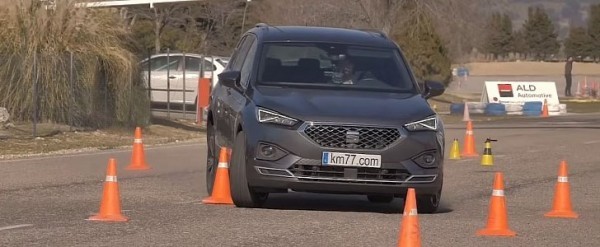
Electronic stability control intervenes, grabbing at the brakes to slow the vehicle, and by the time SEAT enters the last set of cones, it's doing only 15 km/h. So you could say that it comes to a complete stop without any braking intervention from the driver.
Is that bad? Yes. You have to consider that the moose test is designed to simulate avoiding an obstacle in your lane by quickly jumping in and out of the opposite lane. Eventually, the driver figured out that by doing 74 km/h and putting in smaller, less abrupt steering inputs, the Tarraco would maintain 40 km/h by the last set of cones.
Similar results were achieved in the slalom course. It was impossible for the driver to pass all the cones at 75 km/h. He also noted that the result was the same in both Sport and Comfort modes, despite the adaptive suspension system. The only difference was that in Sport, the steering was harder to use. The ESP system would always drag away all the speed if it sensed excessive input from the driver to ensure the heaviest of SEAT models doesn't roll over.
The Tarraco is a 5+2 crossover, based around the VW Tiguan Allspace and Skoda Kodiaq. We think it looks very handsome with its understated LED lights and color choices. The engines are the same too, with most people opting for a 150 HP 2-liter diesel like the one in this test.








